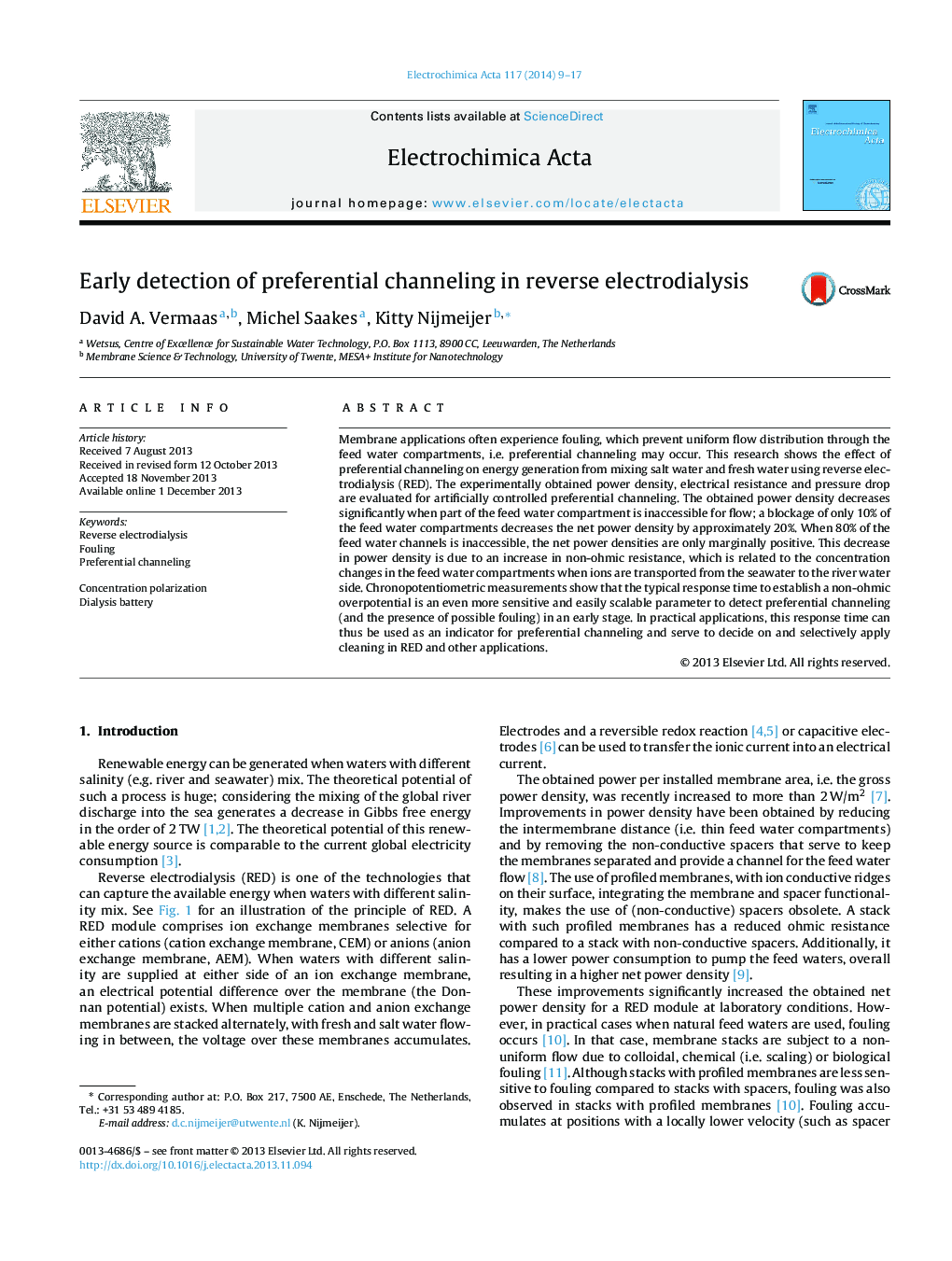| Article ID | Journal | Published Year | Pages | File Type |
|---|---|---|---|---|
| 186690 | Electrochimica Acta | 2014 | 9 Pages |
Membrane applications often experience fouling, which prevent uniform flow distribution through the feed water compartments, i.e. preferential channeling may occur. This research shows the effect of preferential channeling on energy generation from mixing salt water and fresh water using reverse electrodialysis (RED). The experimentally obtained power density, electrical resistance and pressure drop are evaluated for artificially controlled preferential channeling. The obtained power density decreases significantly when part of the feed water compartment is inaccessible for flow; a blockage of only 10% of the feed water compartments decreases the net power density by approximately 20%. When 80% of the feed water channels is inaccessible, the net power densities are only marginally positive. This decrease in power density is due to an increase in non-ohmic resistance, which is related to the concentration changes in the feed water compartments when ions are transported from the seawater to the river water side. Chronopotentiometric measurements show that the typical response time to establish a non-ohmic overpotential is an even more sensitive and easily scalable parameter to detect preferential channeling (and the presence of possible fouling) in an early stage. In practical applications, this response time can thus be used as an indicator for preferential channeling and serve to decide on and selectively apply cleaning in RED and other applications.
